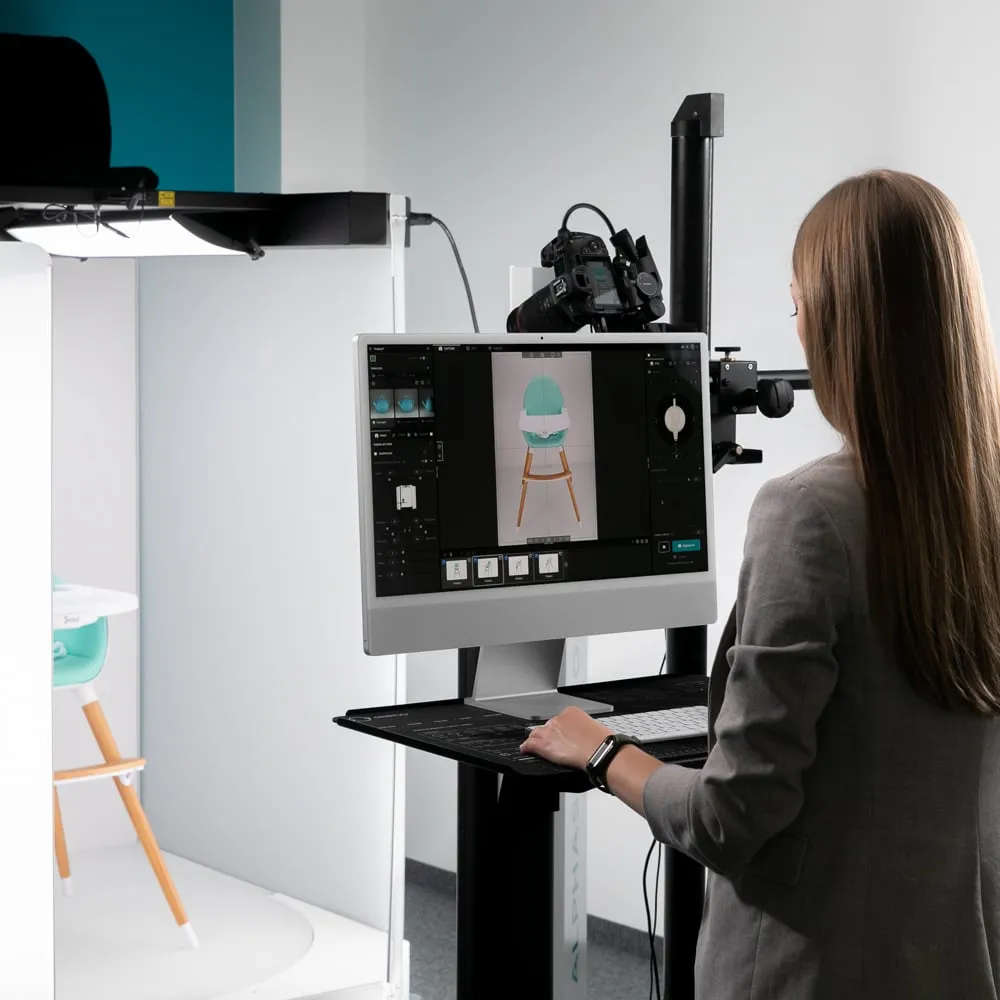

Use your photo studio to do virtual reality
Descartes and the illusion of the senses

Can I trust my senses?
The idea of an alternative reality is not new. As early as the 17th century, René Descartes suggested that our perceptions could be misleading, an intuition that resonates strikingly today with the virtual reality (VR). This technology plunges us into immersive digital worlds, pushing the boundaries of what we thought was possible.
Sensorama: the ancestor of Oculus

In the 1960s, the American engineer and filmmaker Morton Heilig designed the Sensorama, an immersive multi-sensory machine considered to be one of the first virtual reality systems. The Sensorama looked like an arcade machine where the user sat down to look at a stereoscopic 3D screen. The machine broadcast sounds in stereo, sent vibrations through the seat, projected odors corresponding to the scene displayed and even a breath of air to accentuate the effect of movement.
Heilig had produced several short films specially designed for the Sensorama, including a simulation of a motorcycle ride through the streets of New York, where the user felt the wind on their face and heard urban noises. Unfortunately, due to lack of funding, the Sensorama has never been marketed on a large scale. However, this visionary invention already laid the foundations for what would later become the Modern VR.
Photogrammetry and 3D: at the heart of immersion
One of the pillars of modern VR is based on photogrammetry, a technique that transforms series of photos into ultra-realistic 3D models. Thanks to artificial intelligence and advanced algorithms, this technology is used to:
- Preserving heritage : digitization of historical monuments.
- Boosting e-commerce : creation of 3D models for virtual try-on.
- Optimizing the industry : simulation and prototyping of products.
Solutions like omi.so facilitate this integration by simplifying the creation of experiences 3D and AR directly integrated into online sales platforms.
PackshotCreator : a pioneer in photogrammetry
Dès 2014, PackshotCreator understood the potential of photogrammetry With her range MaestroBot, allowing the creation of models 3D accurate for e-commerce and digital marketing. This technology allows companies to generate accurate renderings that can be used by Augmented reality (AR) and virtual reality (VR).
Omi.so: revolutionizing e-commerce with 3D

The platform Omi.so allows brands to easily create interactive experiences by 3D and AR. Thanks to technologies WebGL and WebAR, it makes 3D models accessible without requiring a VR headset. To ensure accurate digitization, omi.so relies on PackshotCreator and its tools of photogrammetry advanced.
Orbitvu: from 360° to 3D
Orbitvu supports its customers in the transition to photogrammetry And the 3D by going through the 360° presentations. These interactive animations allow users to observe a product from all angles, with exceptional image quality.
Once mastering the 360° acquired, businesses can switch to multi-view (multi-row 360°). This technique, which combines multiple shooting angles, opens the door to complete 3D modeling.
To facilitate this transition, Orbitvu offers equipment such as Alphashot XL And his 3D arm, who automate shooting from different angles. These tools guarantee a homogeneous result, essential for Conversion to usable 3D model.

Orbitvu and the digitization of heritage: the example of Pompeii
The technology ofOrbitvu is not limited to trade. It also plays a key role in preservation of heritage. A good example is the mission of Digitization of the Pompeii Archaeological Park.
In only 3 months, a team of two people succeeded in Photograph more than 5,000 artifacts, thanks to advanced automation tools:
- 2 x Alphashot 360
- 1x Alphashot XL with 3D arm
- Orbitvu Station Software
- Esimple Smart Capture with parallel processing
These technologies have made it possible to document and preserve these historic objects digitally, while facilitating their exploration by vr.
Fittingbox: the virtual try-on reinvented
Another field where VR and photogrammetry bring real added value to a customer ofOrbitvu, is a pioneer in this field. Specializing in the digitization of eyeglass frames, Fittingbox offers the biggest brands in the sector solutions allowing consumers to try on glasses in Augmented reality directly from their.
Thanks to photogrammetry and equipment such as the Alphashot 360, Fittingbox captures every detail of the frames with extreme precision. These high-resolution models are then integrated into interactive experiences, improving the online shopping experience and reducing return rates.
THEvirtual tryout thus becoming a key element of e-commerce, offering a realistic and reassuring immersion to customers advanced in the digitization of eyeglass frames, Fittingbox offers the biggest brands in the sector solutions allowing consumers to try on glasses in Augmented reality directly from their screen.
Thanks to photogrammetry and equipment such as theAlphashot 360, Fittingbox captures every detail of the frames with extreme precision. These high-resolution models are then integrated into interactive experiences, improving the online shopping experience and reducing return rates.
THEvirtual tryout thus becomes a key element of e-commerce, offering a realistic and reassuring immersion to customers before they buy.
Photogrammetry software for products
Several specialized software programs allow the creation of models. Precise 3D based on photographs:

- Agisoft Metashape : Powerful software allowing advanced photogrammetric reconstruction, used for e-commerce and heritage.
- AliceVision Meshroom : An open-source suite that generates textured 3D models.
- Pix4Dmapper : Transforms multispectral data into accurate 3D models.
- Autodesk ReCap : Creation of 3D models with advanced point cloud management.
Conclusion

Whether in e-commerce, the patrimony Or the industry, the vr, the photogrammetry And the 3D modeling transform the way we perceive and interact with the world. With actors like PackshotCreator, omi.so, Orbitvu and Fittingbox, these technologies are becoming accessible and revolutionizing our daily lives.
More than a technological advance, VR is redefining the way we see, touch, and experience our environment. The future promises to be immersive!


